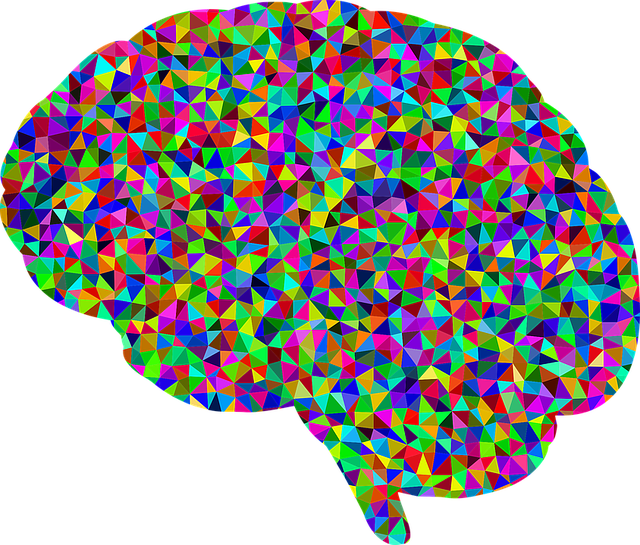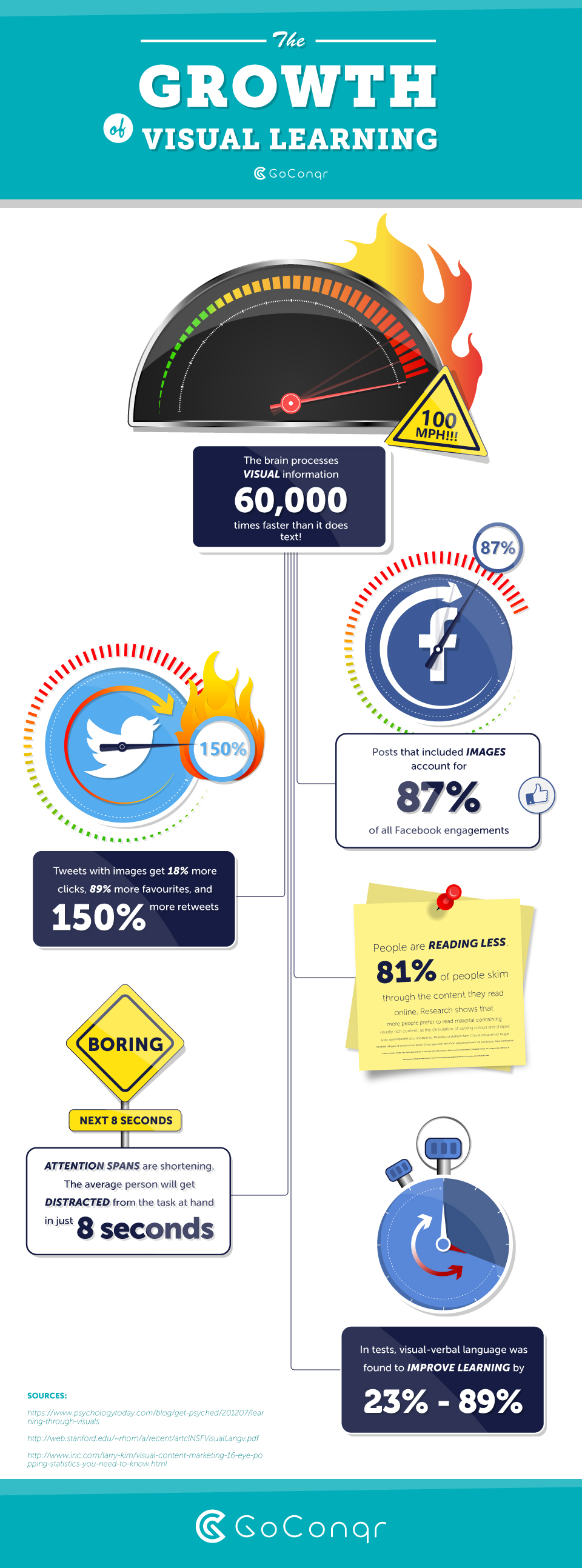Why showing more is so important to knowing more.

Understanding how the brain processes information is vitally important in helping you put together a training program for building talent in the workplace.
This means recognising one simple fact: that the human brain is, first and foremost, a powerful image processor. Your sensory cortex has evolved over millennia to effectively decode, understand and memorise information visually – which makes sense, given that our ancient ancestors’ needed to be able to quickly spot prey and recognise predators before it was too late.
While we may not encounter the same perils in our day-to-day lives as our prehistoric forefathers did, our brains are still very much hardwired for visual processing.
Just consider how you consume information regularly. These days it’s bound to be online and on the go. And since reading through lots of text is simply incompatible with modern-day living and workflows, most of us now prefer to acquire information visually, whether we realise it or not.

Much of that information now comes via social media sites such as Facebook and Twitter (social media overtook organic search as the number one way of accessing information online way back in 2014), yet the figures show that the vast majority of social media content we actually engage with is mainly visual.
In fact we’re reading less and less actual text. Several published studies show we now simply skim read (research suggests that average online readers read somewhere between 20 and 28% of the total words in an article) rather than read in depth. Even more surprising is that our attention spans are getting shorter (for most people it takes just 8 seconds before distraction kicks in). So I guess I’d better get to the point pretty quickly:
The Benefits of Visual Learning
This doesn’t mean that we should abandon text of course. It simply means that text works best when supported visually.
This is something that academic Robert E. Horn pointed out in a paper presented at Stanford University in 2001 entitled “Visual language and converging technologies in the next 10-15 years (and beyond)”.
In it, Horn spoke of “visual language” as being a powerful new way of displaying and absorbing information through a combination of words, visuals and shapes. Its potential for building talent in the workplace was huge:
“…visual language has the potential for increasing human ‘bandwidth’ – the capacity to take in, comprehend, and more efficiently synthesize large amounts of new information.”
He also cited studies that documented how visual learning improved the performance levels of test subjects by 23% in one case and a staggering 89% in another.
While this might sound too good to be true, when you consider the fact that the human brain processes visual information up to 60,000 times faster than it does text, then such dramatic improvements don’t seem quite as surprising.
Visual learning in the workplace
So what does all this mean for building talent in the workplace? Simply put, it means that rethinking how you present your training content would be a wise idea.
According to Horn, the visual material you use needn’t be graphically elaborate or perfectly polished; it’s more important that it breaks the information presented down clearly by using some form of differentiation.
1. Use tools that encourage a more visual learning style
Visual content such as Mind Maps, Flashcards and Slides can incorporate fields of text in engaging new ways. Using icons, colours, and even different font types and sizes can be extremely effective at simplifying difficult concepts to decrease learning time, improve comprehension, enhance retrieval, and increase retention.
Such content also takes on a new depth of purpose not only when training employees and developing their skills, but also when communicating ideas in brainstorming sessions and in social collaborations. “Visual-verbal language (together with computer-based tools) may eliminate the major roadblocks to thinking and communicating big, complex thoughts”, wrote Horn in the aforementioned Stanford paper. They provide a far more effective way of “representing and communicating mental models of thought efficiently and effectively.”
2. Less Numbers, More Visuals
Big data is here to stay. Never before have companies had such access to so much information as they employ all kinds of analytics and data-mining techniques to extract information that is valuable, insightful and above all else, actionable.
But despite their intrinsic value, data that’s number-heavy is still too abstract for most people to easily absorb. The solution is to make those numbers visual through the use of graphs, maps, charts, diagrams and infographics. In so doing you make it possible to communicate those key patterns, trends and observations with employees who can then offer game-changing insights of their own.
3. Be Creative
A poorly chosen visual is just as likely to harm learning as it is to help. Using irrelevant or distracting images, colours and fonts can disengage readers or distract them from the key information you want to deliver. Consider first the information you wish to communicate or learn, then decide on what graphic elements would be capture or complement it. The stronger your visuals are, the more powerful the effect will be. Check this out if you want some inspiration.
As they say, seeing is believing, so why keep reading when you can just start creating a visual language for your business right away?
Find out how you can bring the power of visual language learning into your workplace with GoConqr Campus.
